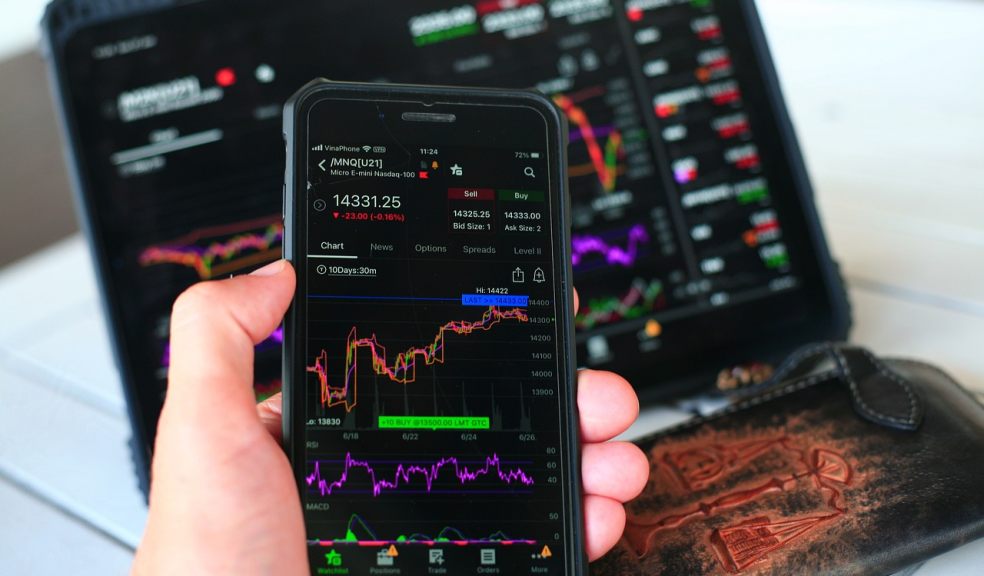
Essential Tools for Assessing Stock Price Volatility
Stock price volatility is an important aspect of any investment decision, but it is often misunderstood or overlooked. No matter whether you are an individual investor, a financial advisor or a student trying to learn investment strategies, an understanding of volatility can help you avoid unnecessary risk and capitalize on better opportunities. 5starsstocks. com Many other platforms simplify the process of risk assessment with the use of vital stock volatility tools and resources specifically developed for all types of investors.
This guide covers the fundamentals of volatility, removes the shroud of mystery from risk evaluation measures, recounts the key monitoring tools, and provides a sound approach to protecting investments.
Understanding Stock Price Volatility and Its Importance
Share price volatility demonstrates how much the price of the stock is changing with regard to a particular price. A stock is seen as highly volatile if its price moves drastically from day to day. On the other hand, stocks that tend to have smaller price fluctuations are considered low-volatility stocks.
Why does volatility matter?
- Risk management: An asset with high volatility can bring higher returns, but it also exposes you to greater potential losses.
- Decision making: Understanding volatility helps investors select stocks that match their risk tolerance and financial goals.
- Opportunity identification: Savvy traders often use volatility signals to identify potential buy or sell opportunities.
Common Types of Investors and Volatility Preferences
|
Investor Type |
Volatility Preference |
Typical Portfolio Composition |
|
Day Traders |
High |
High-growth, momentum stocks |
|
Long-Term Investors |
Low |
Blue-chip stocks, bonds |
|
Risk-Averse Savers |
Very Low |
Government bonds, savings accounts |
|
Balanced Investors |
Moderate |
A mix of stocks, ETFs, and bonds |
If you want to make investment decisions with your eyes wide open, a sound grasp of volatility metrics is essential.
Core Risk Assessment Metrics Explained
Intelligent investors employ an array of specific risk measures to gauge volatility and how it can affect their investment. So each of these measures has its own edges. Here is how to understand and use the most relevant of them.
Standard Deviation
The most common volatility metric is standard deviation. It captures how much a stock’s returns differ from its average return over a given period.
How it’s calculated
- Compute the average (mean) price or return.
- Find the difference between each data point and the mean.
- Square each difference, sum them, and divide by the number of observations minus one.
- Take the square root of that result.
Practical usage
- Low standard deviation means the stock price moves within a narrow range.
- High standard deviation signals wide price swings and higher risk.
Interpreting Standard Deviation
|
Level |
Typical Annual Std. Dev. |
Interpretation |
|
Low Volatility |
5%-10% |
Predictable, less risky |
|
Medium Volatility |
10%-20% |
Typical for major stocks |
|
High Volatility |
20%+ |
Unpredictable, high risk |
Market participants and analysts frequently shorten standard deviation to simply “volatility.” It is a key feature of almost all risk models and portfolio analysis toolkits you can find on 5starsstocks.com.
Maximum Drawdown
Maximum drawdown is the loss from one peak to a subsequent trough at a specific period. This ratio is important to the evaluation of how much the stock or portfolio could actually fall.
- Calculation: Find the highest value achieved, then the lowest subsequent value. Divide the change by the peak, and express as a percentage.
- Usage: Maximum drawdown helps gauge the worst-case scenario you might face with a given investment.
Example Maximum Drawdowns
|
Stock |
Period |
Peak Price |
Trough Price |
Max Drawdown |
|
Stock A |
Mar-Jun 2023 |
$120 |
$80 |
|
|
Stock B |
Jan-May 2023 |
$50 |
$40 |
|
|
Stock C |
Feb-Sep 2023 |
$200 |
$100 |
|
Maximum drawdown doesn’t account for gains, only the worst possible loss if you bought at the top.
Beta
Beta measures how much a stock is expected to swing, relative to the general market. The beta of the S&P 500 is 1.0. A stock with a beta of greater than 1 is more volatile than the market, and a stock with a beta of less than 1 is less volatile than the market.
- Beta < 1.0 Defensive, less sensitive to market swings (e.g., utilities).
- Beta = 1.0 Moves in line with the market.
- Beta > 1.0 Aggressive, exaggerated response to market movements (e.g., tech stocks).
Beta helps assess whether adding a stock increases or decreases overall portfolio risk.
VIX The Market’s Volatility Barometer
The CBOE Volatility Index (VIX) tracks market volatility expectations over the next 30 days by analyzing S&P 500 option prices. A higher VIX reading signals higher expected market volatility.
- VIX above 30: Signals high expected volatility and heightened fear in the market.
- VIX below 20: Indicates a calmer, more stable environment.
Here’s how VIX levels have trended in recent years:
VIX Historical Averages
|
Year |
Average VIX Value |
|
2021 |
|
|
2022 |
|
|
2023 |
|
Monitoring the VIX is especially helpful for investors managing large portfolios or trading options.
Essential Tools and Platforms for Volatility Assessment
Assessing stock volatility doesn’t require a finance degree, but it does require reliable tools.
Financial Analysis Software
Professional platforms such as Bloomberg Terminal, Morningstar Direct, and FactSet have advanced analytics, customizable volatility screens, risk heatmaps and databases of historical prices, among other features.
Online Stock Screeners
Several powerful, accessible screeners enable you to compare stocks based on volatility metrics:
- Yahoo Finance: Includes volatility, beta, and drawdown fields for thousands of stocks.
- 5starsstocks: Specializes in ranking and screening stocks based on advanced risk assessment metrics and investment strategies.
- Finviz: Allows custom volatility and beta filters.
Brokerage Platforms
Most top brokerages now have stock research dashboards included, complete with “stock volatility” ratings. Standard deviation, beta and historical price are typically visualized in charts and tables.
For more complex strategies, there are sources such as invest1now.com stocks, where educational tools can be found that can help an investor learn more about how to use risk measurements as part of stock picking and in portfolio building.
Feature Comparison Stock Volatility Tools
|
Platform |
Free Version |
Screeners |
Volatility Metrics |
Educational Resources |
|
Yahoo Finance |
Yes |
Yes |
Yes |
Moderate |
|
5starsstocks .com |
Yes |
Yes |
Yes |
Extensive |
|
Finviz |
Yes |
Yes |
Limited |
Limited |
|
Bloomberg |
No |
Yes |
Advanced |
Professional |
|
invest1now.com stocks |
Yes |
Yes |
Average |
Detailed articles |
Practical Strategies for Managing Risk
Having assessed volatility, you must act on it with practical risk management techniques.
Risk Management
- Set clear investment goals: Know your risk tolerance and set portfolio rules accordingly (e.g., never hold more than 10% in a single high-volatility stock).
- Maintain a risk log: Track your investments and review losses or gains from volatile stocks.
Diversification
“You can’t predict the next price swing, but you can prepare for it.” Building a diversified portfolio remains one of the simplest and most effective ways to reduce overall volatility.
- Spread investments across different sectors, asset classes, and geographies.
- Pair volatile stocks with stable, income-producing assets.
Stop-Loss Orders
A stop-loss order automatically sells your stock if it falls below a specified price. It’s especially useful for limiting the impact of rapid declines in volatile stocks.
- Avoid emotional selling during panics.
- Prevents total capital erosion during sudden downturns.
- Beware of “gaps” where fast price moves skip the stop-loss mark.
Example Risk Management Checklist
- Assess volatility before investing.
- Diversify across sectors and assets.
- Use stop-loss orders for high-volatility holdings.
- Review your risk exposure quarterly.
Next Steps for Smarter Investment Decisions
The evaluation and comprehension of stock price variability is not a once-only exercise. The best investors treat it as a lifetime journey, one where new data is constantly being added, you receive feedback on past trades, and adjust your strategy as markets change.
Using the right stock volatility tools, risk assessment metrics, and stock chart learning resources like 5starsstocks.com, you’ll protect yourself from the overwhelming majority of losses and invest1now.com that leave you better able to handle risk and decide with certainty what to invest in.
Make continuous learning a priority in order to keep up with changes in the market, and don’t be afraid to try out new tools and strategies that serve your investment goals.













